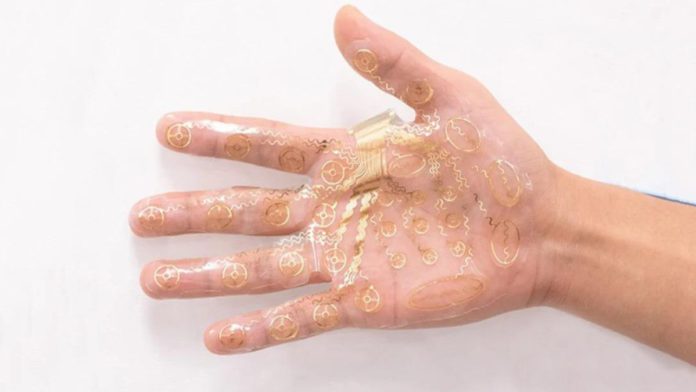A team of researchers from the City University of Hong Kong (CityU) has introduced ‘WeTac,’ which is a thin, wearable electronic skin that can provide tactile feedback to users in AR and VR environments.
This wireless electro-tactile system uses a skin-friendly hydrogel layer that sticks onto the palm of the hand and collects personalized tactile sensing data to bring a more realistic virtual touch experience to the metaverse.
The WeTac system developed by CityU consists of two parts: a palm patch with hydrogel electrodes as a tactile interface and a tiny flexible actuator that acts as a control panel. The whole actuator weighs only 19.2 grams and is small enough to be worn on one’s forearm.
Read More: Zhejiang, Among Other Chinese Provinces, To Build A US$28.7b Industry Metaverse By 2025
It also has Bluetooth Low Energy (BLE) and a tiny rechargeable lithium-ion battery for wireless transmission and power. The thickness of the palm patch is a mere 220 microns to 1 mm, and the electrodes reach from the palm to the fingertips.
Through this, users will be able to experience objects in virtual scenarios, such as grasping a tennis ball during sports practice or touching a cactus in virtual social networks or games.


